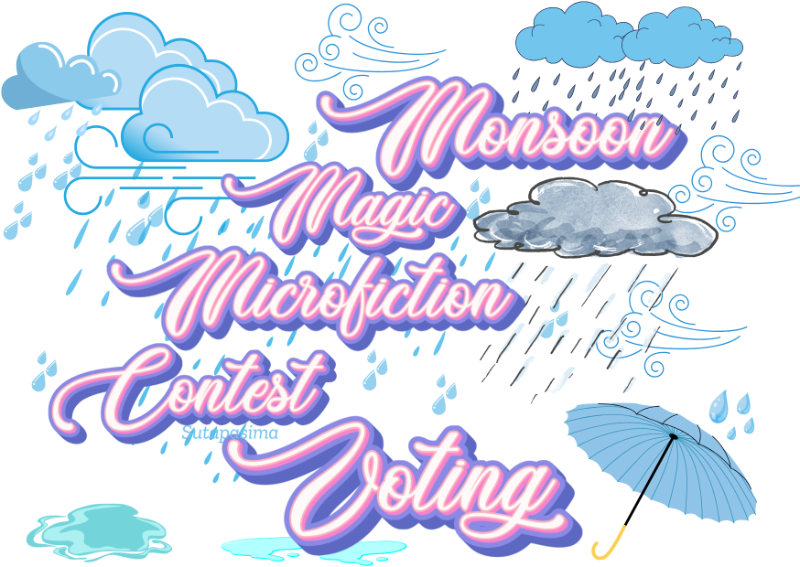Posted:
In-branding arrives on Indian television
Neha Maheshwri, TNN | Apr 2, 2011, 12.00am ISTOn Thursday evening, one of the top shows, Pavitra Rishta had an in-branding of a toothpaste. The product was weaved not-so-subtly on the show.
The trend started roughly a month ago when an international chat show The Morning Show initiated brand advertising on television. Will this now become a trend on Indian television is the million dollar question. Both, the broadcasters and the producers are upbeat about the idea. Read on to find out why...
Show me the money
Ekta Kapoor, who is the first to 'advertise' a brand on her show, thinks brand placement will help the producer and the channel to recover the cost and improve the quality of the show. She quips, "The idea is feasible. In films, branding happens right during the initial stages but with TV soaps, content changes every second day, keeping in mind the response of viewers. So we need to infuse these brands based on the ongoing track. Also the faces we see on TV today boast of such huge fan following that it is clever to use them to endorse a brand. This will enable us to generate the cost of content and programming from additional sources and also open new gates for revenue."
Keep it real
Producer Rajan Shahi says,
"Television has grown by leaps and bounds especially in the last few years, thereby making it a strong mode for advertising and branding. Branding needs to be done in a subtle way so that it looks authentic. One must take note that the brand fits the situations in a show and should not appear planted."
The big blur
Producer Siddharth Tewary too feels that the brands must fit the storyline and should not be forced, as it would be unreal and upset the viewer. "Brands are blurred primarily for financial reasons as exposure on national television is directly proportionate to the money involved. There are hardly any advantages of blurring apart from making brands realise the need to tie up with the channel and the production house. However, the disadvantage is that when you blur a frame, it automatically sticks out and distracts viewing. Quite a few Indian reality shows have been doing it for sometime now as things are planned in advance. In a fiction show though, the storyline keeps evolving and it becomes difficult to commit exact exposures on screen before hand.
What the actors say
As much as the channel would like to be paid for exclusively advertising a brand, the bearer of the message is usually an actor. And sometimes there might be a clash of interest as an actor might be the face of say some soap/shampoo but asked to 'advertise' another soap/shampoo on the show. What happens then? Shouldn't they be paid too?
If it's on the contract
Says actor Karan Mehra, "Usually brand uses models and branding via soaps is a novel idea. If artists get remuneration then why not? It may be disappointing only if an artist is not paid because what if he wants to associate himself with a brand outside the one used in the show. When we perform for the channel, we are paid and if brands are being promoted by us, we expect to be paid. An actor can't be used for anything and everything as there is a valid contract with clauses. Even internationally, prior approval is taken from the artists if they are being used to promote brands or products in shows."
As long as it's natural
Actress Manasi Parekh Gohil adds, "They should stop blurring products on the show, because the minute the product is blurred your attention goes directly to it! And as a viewer you want to find out about the product and it's very easy to figure out the details of a brand because we are so used to seeing them on a daily basis. In fact, I feel that if we leave the brand, it weaves in naturally into the scene and people probably won't pay much attention to it because its part of the setting."
It's the character, not me!
But what if you are holding a brand a rival to the one, you are an ambassador of? Raj Singh Arora who is seen in different commercials including a popular biscuit brand says, "For a channel, the primary revenue stream is advertising so you lose out on a lot of moolah through product placement. Unless, in-branding leads to extra revenue as well as further marketing of a product or brand, the blurring of products will continue! There has to be a common ground between the channel and the advertiser in terms of revenue. If I have a contract ad, which is very rare, then I would not pick up the rival brand. However, such contracts don't happen even with the biggest stars as even Bollywood actors are one day endorsing a cold drink and the next endorsing another. Also if I am doing a TV show, it's the character that is endorsing the product and not Raj Singh Arora so I don't see a conflict."
The right 'channel'
For a channel that generates revenue from the advertisements and in-branding, showcasing a brand without being paid for can be a tricky situation. Also there can be a conflict if the brand used in the show is the rival of the brand aired during the commercial break.
Juhi Ravindranath, Head, Advertising Sales - Content Sales, Imagine TV states,
"As an internal flexible code of conduct, broadcasters may choose to disallow in-programme product display - unless paid for. Product integration is an emerging revenue stream for broadcasters and they will want to protect it. It also protects the advertiser in the case of sponsored shows, by disallowing competition to gain a back door entry through product placement. Most GECs are working with advertisers on customised placements of brands to drive additional value for both- the broadcaster and the brand."
Sukesh Motwani, Programming Head Fiction, Zee TV says,
"From a creative view point, subtle product integrations are perfectly fine. There has been a fine blend between the product and the story line which will make the integration look seamless."
The trend started roughly a month ago when an international chat show The Morning Show initiated brand advertising on television. Will this now become a trend on Indian television is the million dollar question. Both, the broadcasters and the producers are upbeat about the idea. Read on to find out why...
Show me the money
Ekta Kapoor, who is the first to 'advertise' a brand on her show, thinks brand placement will help the producer and the channel to recover the cost and improve the quality of the show. She quips, "The idea is feasible. In films, branding happens right during the initial stages but with TV soaps, content changes every second day, keeping in mind the response of viewers. So we need to infuse these brands based on the ongoing track. Also the faces we see on TV today boast of such huge fan following that it is clever to use them to endorse a brand. This will enable us to generate the cost of content and programming from additional sources and also open new gates for revenue."
Keep it real
Producer Rajan Shahi says,
"Television has grown by leaps and bounds especially in the last few years, thereby making it a strong mode for advertising and branding. Branding needs to be done in a subtle way so that it looks authentic. One must take note that the brand fits the situations in a show and should not appear planted."
The big blur
Producer Siddharth Tewary too feels that the brands must fit the storyline and should not be forced, as it would be unreal and upset the viewer. "Brands are blurred primarily for financial reasons as exposure on national television is directly proportionate to the money involved. There are hardly any advantages of blurring apart from making brands realise the need to tie up with the channel and the production house. However, the disadvantage is that when you blur a frame, it automatically sticks out and distracts viewing. Quite a few Indian reality shows have been doing it for sometime now as things are planned in advance. In a fiction show though, the storyline keeps evolving and it becomes difficult to commit exact exposures on screen before hand.
What the actors say
As much as the channel would like to be paid for exclusively advertising a brand, the bearer of the message is usually an actor. And sometimes there might be a clash of interest as an actor might be the face of say some soap/shampoo but asked to 'advertise' another soap/shampoo on the show. What happens then? Shouldn't they be paid too?
If it's on the contract
Says actor Karan Mehra, "Usually brand uses models and branding via soaps is a novel idea. If artists get remuneration then why not? It may be disappointing only if an artist is not paid because what if he wants to associate himself with a brand outside the one used in the show. When we perform for the channel, we are paid and if brands are being promoted by us, we expect to be paid. An actor can't be used for anything and everything as there is a valid contract with clauses. Even internationally, prior approval is taken from the artists if they are being used to promote brands or products in shows."
As long as it's natural
Actress Manasi Parekh Gohil adds, "They should stop blurring products on the show, because the minute the product is blurred your attention goes directly to it! And as a viewer you want to find out about the product and it's very easy to figure out the details of a brand because we are so used to seeing them on a daily basis. In fact, I feel that if we leave the brand, it weaves in naturally into the scene and people probably won't pay much attention to it because its part of the setting."
It's the character, not me!
But what if you are holding a brand a rival to the one, you are an ambassador of? Raj Singh Arora who is seen in different commercials including a popular biscuit brand says, "For a channel, the primary revenue stream is advertising so you lose out on a lot of moolah through product placement. Unless, in-branding leads to extra revenue as well as further marketing of a product or brand, the blurring of products will continue! There has to be a common ground between the channel and the advertiser in terms of revenue. If I have a contract ad, which is very rare, then I would not pick up the rival brand. However, such contracts don't happen even with the biggest stars as even Bollywood actors are one day endorsing a cold drink and the next endorsing another. Also if I am doing a TV show, it's the character that is endorsing the product and not Raj Singh Arora so I don't see a conflict."
The right 'channel'
For a channel that generates revenue from the advertisements and in-branding, showcasing a brand without being paid for can be a tricky situation. Also there can be a conflict if the brand used in the show is the rival of the brand aired during the commercial break.
Juhi Ravindranath, Head, Advertising Sales - Content Sales, Imagine TV states,
"As an internal flexible code of conduct, broadcasters may choose to disallow in-programme product display - unless paid for. Product integration is an emerging revenue stream for broadcasters and they will want to protect it. It also protects the advertiser in the case of sponsored shows, by disallowing competition to gain a back door entry through product placement. Most GECs are working with advertisers on customised placements of brands to drive additional value for both- the broadcaster and the brand."
Sukesh Motwani, Programming Head Fiction, Zee TV says,
"From a creative view point, subtle product integrations are perfectly fine. There has been a fine blend between the product and the story line which will make the integration look seamless."



















